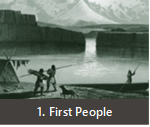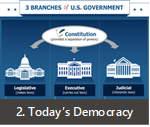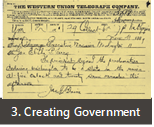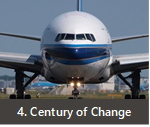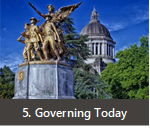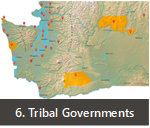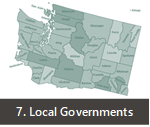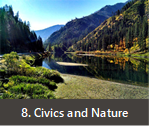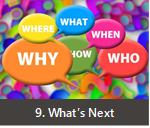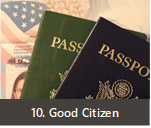The State We're In: Washington - Teacher Guide Ch. 2: The Design of Today's Democracy
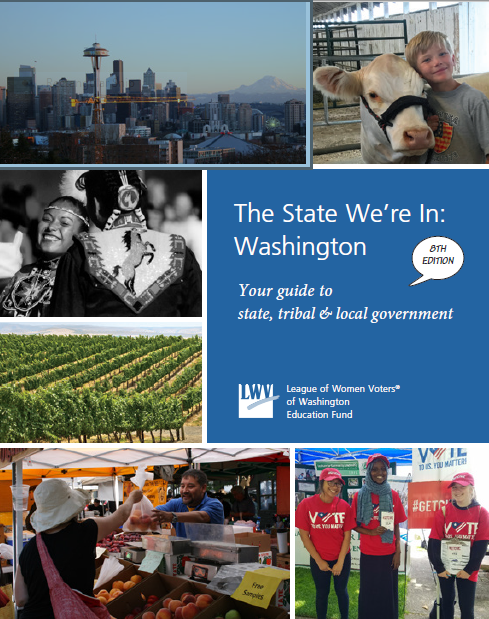
State We're In Washington cover
Chapter 2 The State We’re In:
Washington
The Design of Today’s Democracy
Access the whole book: The State We're In Washington
Enduring Understanding
Washington’s government is a system guided by laws, with democratic institutions that serve the people of the state balanced with the civic engagement of its citizens.
Supporting Questions
Students consider these questions - finding and using evidence to support the Enduring Understanding.
- How do the branches work together?
- How are the levels of government organized?
- How do political beliefs influence people?
- How does Washington’s democracy ensure that voting is fair to everyone?
- What role does the media play in a democracy?
- How have immigrant groups influenced our state?
- What is a citizen’s role in a democracy?
Learning Targets
Students will be able to…
- Explain how the three branches of state and federal government work to balance power.
- Compare how levels of government (federal, state, local, and tribal) interact and negotiate differences.
- Explain how peoples’ political ideals influence their party affiliations.
- Explain barriers to fairness in voting and identify potential barriers.
- Explain how the media and reliable sources can be considered valuable to a democracy.
- Explain the social, political, economic, and cultural significance of immigrant groups and their contributions in Washington State.
- Explain the various ways they can and should participate in government as citizens in a democracy.
Launch
Hook students into the content of Chapter 2 of The State We're In Washington
Distribute the Student Handout: Launch to students.
- Guide students in answering the prompts on the handout individually and in partners.
- There is no “correct” answer. Encourage the students to explain their thinking with each other
Resources
Focused Notes
Activating student thinking about the content of the entire chapter.
Distribute the Student handout: Focused Notes to students.
- As students read, they will record their understanding, thinking, and questions about the content using the handout. This can be done individually or collaboratively in pairs or small groups. Since this chapter is lengthy, you may consider jigsawing the sections.
Resources
Text-Dependent Questions
Engaging students in a close reading activity about specific content in the chapter.
Distribute the Student Handout: Text-Dependent Questions document to students.
First Read
Have the students read the section and answer the First read questions on the Text Dependent Questions document.
Second Read
Use the Second read questions below to facilitate a small or whole group discussion about the reading section. When they are done have them use the Text Dependent Questions handout to record their notes.
- What does it mean to “exclude” a person or a group of people?
- Which immigrant groups were specifically excluded by the government?
- Which immigrant groups were specifically favored by the government?
- Reread the paragraph near the top of page 29 on national immigration policy. What is a policy? Who makes policy?
Post read
After students have done a first and second read of the page, use the following questions to facilitate a class discussion. Have students capture their notes on the student handout:
- Look at the images paired with each immigrant group. Choose one group and explain how the image is connected to or helps you understand the text it is paired with.
- Think about the immigrant groups in your community. What do you know about them and how do they contribute to the community?
Notes: You may want to use some or all the Second read or Post read questions. The purpose of the Text Dependent Question activity is to have students do multiple close reads of the text leading to discussion that engages all students. Therefore, you may need to add reading strategies that meet the needs of your students.
Resources
Focused Inquiry
A focused inquiry is a one to two day lesson that will have students engaging in the C3 Framework’s Inquiry Arc.
In this focused inquiry, students investigate the question: How do people impact the economy? Students engage in deep reading and analysis of text, including charts, an infographic, and an interactive map. Students will examine the economic impact that foreign born people have on Washington and communicate their understanding by developing an argument (short essay, infographic, poster, etc.) that includes selection, organization and analysis of relevant content. Students will connect their claim, reasons, and evidence to the ideals set forth in the Washington State Constitution.
Standards
- SSS1.6-8.1 Analyze positions and evidence supporting an issue or an event.
- SSS2.6-8.1 Create and use research questions to guide inquiry on an issue or event.
- SSS3.6-8.1 Engage in discussion, analyzing multiple viewpoints on public issues
- SSS4.6-8.1 Analyze multiple factors, make generalizations, and interpret sources to formulate a thesis in a paper or presentation, while observing rules related to plagiarism and copyright.
- C4.6-8.2 Describe the relationship between the actions of people in Washington State and the ideals outlined in the Washington State constitution.
- C4.6-8.3 Employ strategies for civic involvement that address a state or local issue.
Learning Goals
- Students will make observations, inferences and conclusions about demographic data regarding immigrants in Washington.
- Students will engage in small and large group discussions to share multiple viewpoints.
- Use maps and data to understand a complex issue, develop a claim with reasons and evidence, and communicate their understanding by recommending a course of action or taking informed action.
Compelling Question
How do people impact the economy?
Staging the Question
What immigrant groups are currently in Washington?
- Ask students to come up with a list of immigrant groups they think/know are currently living in Washington State.
- Show them the State Demographics data from the Migration Policy Institute: [https://www.migrationpolicy.org/data/state-profiles/state/demographics/WA]
o Be sure to pay special attention to the definitions of “foreign born” and “US born” prior to reading.
Ask students: We had
some original thinking about which immigrant groups were living in Washington.
Was our original thinking about immigrant groups confirmed or did we revise our
background knowledge as a result of looking at the data?
Supporting Question
Does economic data show that Washington state benefits from immigrants?
- Formative Performance Task:
- Use the Analysis Organizer (Appendix A) to hold thinking about the sources in Appendix B
- What does the data tell us about the impact of immigrants? Does the data suggest an economic benefit to Washington State? Does the data support a key ideal set forth by the Washington State Constitution?
- After students fill out the Analysis Organizer, have a class discussion to answer the supporting question, “Does economic data show that Washington State benefits from immigrants?
- Students will use their understanding of the different sources to answer the supporting question “Does economic data show that Washington State benefits from immigrants?”
Notes to teacher:
- Page 28-29 of The State We’re In: Washington provides background information about immigration in Washington state. Page 37 describes a bit about the key ideals. It is best to read these pages before the inquiry to provide some foundational knowledge on immigration in Washington State. You may want to review the ideals with more depth if this is a new concept to your students.
- You may need to do pre-teaching of some vocabulary that is specific to the information that your students will see on these sources.
- The data on the sources provided is the most up to date as of the writing of this focused inquiry.
Featured Source(s):
- Infographic: Immigrants in Washington | American Immigration Council, 2017 [https://www.americanimmigrationcouncil.org/research/immigrants-in-washington]
- Interactive Map: Take a Look: How Immigrants Drive the Economy in Washington | New American Economy, 2017 [https://www.newamericaneconomy.org/locations/washington/]
Argument:
After students analyze various sources to answer the supporting question and discuss their thinking with the class, they will write a brief response to the compelling question, How do people impact the economy? Responses should include a claim, evidence, and reasoning and cite specific information from sources, including a connection to a key ideal.
Taking Informed Action:
Engage students in a whole class discussion about the different strategies that they engaged in with each of the documents. Students can then create an illustrated graphic that answers the compelling question and informs their peers about how people impact the economy of Washington State in their specific region.
Resources
Attribution and License
State We're In: Washington Cover photo by League of Women Voters. All rights reserved. Used with permission.
Except
where otherwise noted, this Focused Inquiry by Leslie Heffernan, Central Valley
School District, is available under a Creative Commons Attribution License. All logos and
trademarks are property of their respective owners. Sections used under fair
use doctrine (17 U.S.C. § 107) are marked.
Teacher's Guide Menu
Download the all the guides in one document or click on an individual chapter below.
